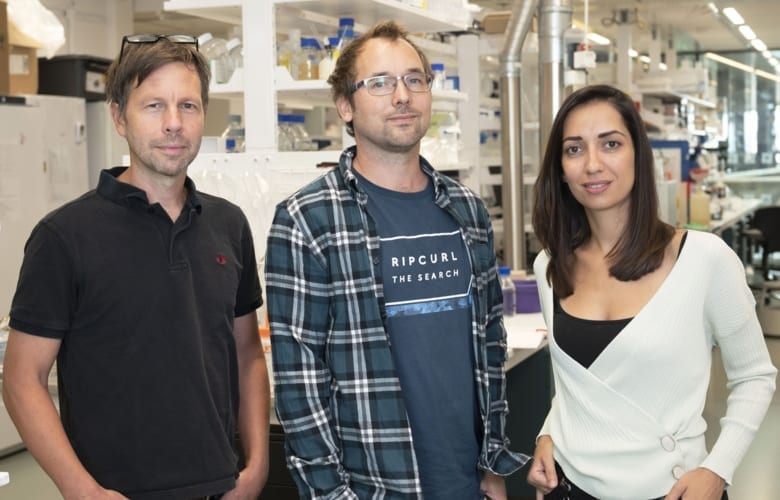
In a glance
Researchers at Osaka City University create a quantum algorithm that removes spin contaminants while making chemical calculations on quantum computers. This llows for predictions of electronic and molecular behavior with degrees of precision not achievable with classical computers and paves the way for practical quantum computers to become a reality.
Overview
Quantum computers are the new frontier in advanced research technology, with potential applications such as performing critical calculations, protecting financial assets, or predicting molecular behavior in pharmaceuticals. Researchers from Osaka City University have now solved a major problem hindering large-scale quantum computers from practical use: precise and accurate predictions of atomic and molecular behavior.
They published their method to remove extraneous information from quantum chemical calculations on Sept. 17 as an advanced online article in Physical Chemistry Chemical Physics, a journal of the Royal Society of Chemistry.
“One of the most anticipated applications of quantum computers is electronic structure simulations of atoms and molecules,” said paper authors Kenji Sugisaki, Lecturer and Takeji Takui, Professor Emeritus in the Department of Chemistry and Molecular Materials Science in Osaka City University’s Graduate School of Science.
Quantum chemical calculations are ubiquitous across scientific disciplines, including pharmaceutical therapy development and materials research. All of the calculations are based on solving physicist Erwin Schrödinger’s equation, which uses electronic and molecular interactions that result in a particular property to describe the state of a quantum-mechanical system.
“Schrödinger equations govern any behavior of electrons in molecules, including all chemical properties of molecules and materials, including chemical reactions,” Sugisaki and Takui said.
On classical computers, such precise equations would take exponential time. On quantum computers, this precision is possible in realistic time, but it requires “cleaning” during the calculations to obtain the true nature of the system, according to them.
A quantum system at a specific moment in time, known as a wave function, has a property described as spin, which is the total of the spin of each electron in the system. Due to hardware faults or mathematical errors, there may be incorrect spins informing the system’s spin calculation. To remove these ‘spin contaminants,’ the researchers implemented an algorithm that allows them to select the desired spin quantum number. This purifies the spin, removing contaminants during each calculation—a first on quantum computers, according to them.
“Quantum chemical calculations based on exactly solving Schrödinger equations for any behavior of atoms and molecules can afford predictions of their physical-chemical properties and complete interpretations on chemical reactions and processes,” they said, noting that this is not possible with currently available classical computers and algorithms. “The present paper has given a solution by implementing a quantum algorithm on quantum computers.”
The researchers next plan to develop and implement algorithms designed to determine the state of electrons in molecules with the same accuracy for both excited- or ground-state electrons.
The Latest Updates from Bing News & Google News
Go deeper with Bing News on:
Quantum algorithm
- How Quantum Computers Could Illuminate the Full Range of Human Genetic Diversity
Pangenomes that incorporate many people’s DNA could capture the breadth of human genetic diversity, and quantum computers may be a key enabler.
- Unveiling a new quantum frontier: Frequency-domain entanglement
Scientists have introduced a form of quantum entanglement known as frequency-domain photon number-path entanglement. This advance in quantum physics involves an innovative tool called a frequency beam ...
- Quantum Cryptography market is projected to grow at a CAGR of 29.3% by 2034: Visiongain
Visiongain has published a new report entitled Quantum Cryptography Market Report 2024-2034: Forecasts by Component (Software, Hardware), by Software (Encryption Algorithms, Key Management Solutions, ...
- Quantum Computing Meets Genomics: The Dawn of Hyper-Fast DNA Analysis
A new project unites world-leading experts in quantum computing and genomics to develop new methods and algorithms to process biological data. Researchers aim to harness quantum computing to speed up ...
- Pasqal and Welinq Partner to Develop Quantum Interconnects
Neutral atom quantum computing company Pasqal and Welinq, a quantum networking company, today announced a partnership intended to to address challenging problems in neutral atom quantum computing. The ...
Go deeper with Google Headlines on:
Quantum algorithm
[google_news title=”” keyword=”quantum algorithm” num_posts=”5″ blurb_length=”0″ show_thumb=”left”]
Go deeper with Bing News on:
Electronic structure simulations of atoms and molecules
- Synthesis of two new carbides provides perspective on how complex carbon structures could exist on other planets
Researchers at the University of Bayreuth have gained new insights in the field of high-pressure carbon chemistry: They synthesized two new carbides—compounds of carbon and another chemical ...
- Virtual Viruses Reveal Complex Genomic Dynamics
A virus may be microscopic, but it contains thousands of nucleic acid bases strategically packaged into a protein shell. Knowing how the virus organizes these vast information stores in a compact ...
- “Neutronic Molecules” – Neutrons Meet Quantum Dots in Groundbreaking MIT Discovery
Study shows neutrons can bind to nanoscale atomic clusters known as quantum dots. The finding may provide insights into material properties and quantum effects. Neutrons are subatomic particles that ...
- Meet the ‘quantum plumbers’ uncovering the mysteries of fluid mechanics at the nanoscale
According to standard fluid dynamics, the friction between a flowing liquid and the pipe wall shouldn’t change as the pipe gets narrower. However, experiments have shown that when water flows through ...
- Researchers discover 'neutronic molecules'
Researchers have discovered 'neutronic' molecules ... neutronic molecules will have a shell structure that mimics the electron shell structure of atoms. "One possible application," he says ...
Go deeper with Google Headlines on:
Electronic structure simulations of atoms and molecules
[google_news title=”” keyword=”electronic structure simulations of atoms and molecules” num_posts=”5″ blurb_length=”0″ show_thumb=”left”]










